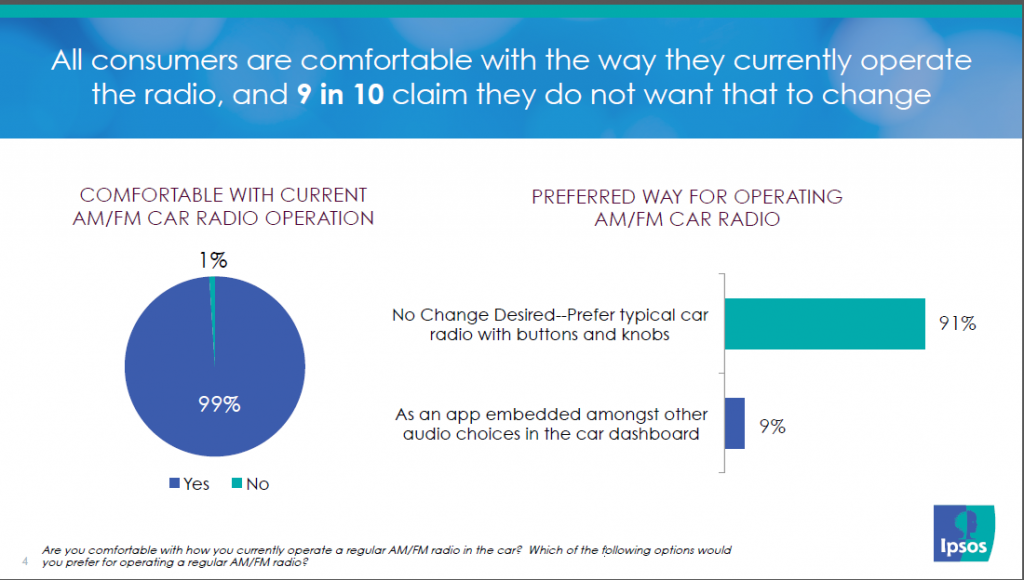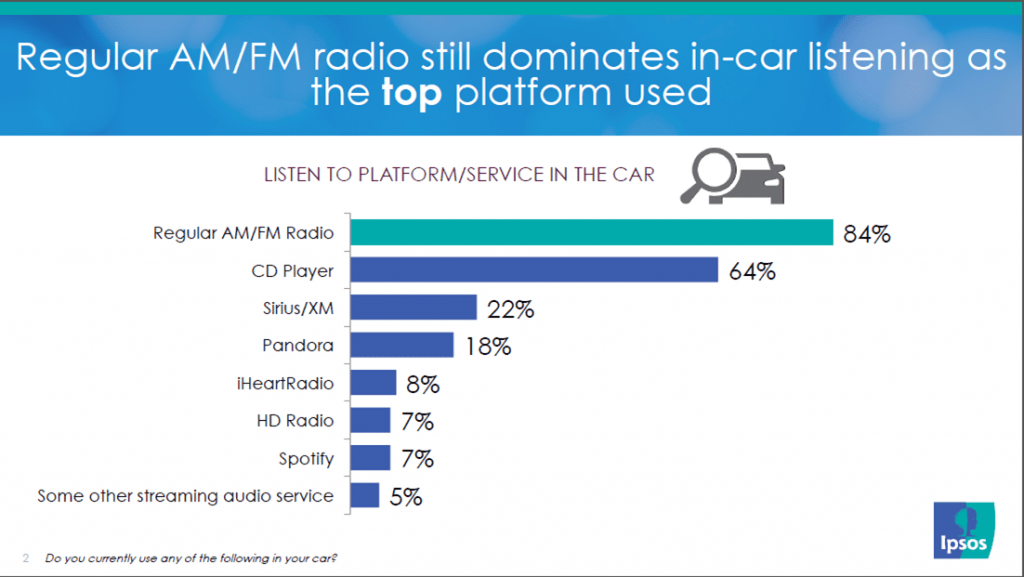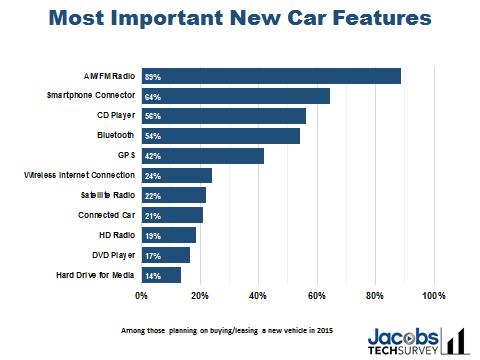
Wait…what? Wayback Wednesday? When did that start?
This morning, to be exact. And I promise you, I won’t make it a habit.
Today’s post is a true “blast from our radio past” from 2015. And wouldn’t you know it – it’s about the fragile relationship between the radio broadcasting and auto industries and how it could impact the future of radio’s anchored presence in car dashboards. In a blog post from David Oxenford earlier this month, he linked it, reminding me I wrote it eight long years ago.
So what does that tell you about the current campaign from radio broadcasters to push through the “AM Radio For Every Vehicle Act,” co-sponsored by the Senate’s “odd couple” Ed Markey and Ted Cruz?
That’s what yesterday was about. For Paul and me, it was one of the most rewarding days we’ve spent in our radio careers. On behalf of the NAB and NASBA (National Alliance of State Broadcaster Associations), we hosted an afternoon of keynotes, panels, and sessions for a motivated, dedicated, and fired up group of broadcasters. You can read about it in today’s Radio Ink.
But it was also a weird déjà vu moment – like we’d been there before. Because we have. The threat to take away radio in the car is not a new one. And that’s a reminder to radio broadcasters we need to get out in front of these threats. We need to be more vigilant and aware. And we need a better “distant early warning system” to address what’s next.
That’s right. It’s why we go to CES every year. Next year, we hope to see more of you there, too. – FJ
Chances are good you saw that story from Forbes last week, strongly showing consumer demand for and usage of the AM/FM radio platform in cars and trucks.
Broadcast radio, a platform? AM/FM radio is a legitimate platform, and according to Forbes contributor Christopher Versace, a new IPSOS survey shows that it’s the dominant choice in cars. Overall, their study reveals that AM/FM radio is the preferred in-car preference with 91%, compared to only 9% opting for an app-based system. Respondents were given an either/or choice, and they overwhelmingly went with old school radio.
In their survey of more than 1,000 Americans 18+, IPSOS also learned than more than 8 in 10 (84%) survey takers listen to AM/FM radio in their cars, while Siriius/XM (22%), Pandora (18%), and Spotify (7%) distantly trail.
Versace’s money quote: “More Americans use AM/FM radio each week than use Facebook.”
And from the research side, Thomas Spinelli, VP with Ipsos MediaCT, noted. “Our studies show that despite all the technological advances we’ve made when it comes to digital listening, the vast majority of Americans still prefer AM/FM radio overall and especially expect it to be a part of their cars – in fact, virtually all said they wouldn’t buy a car without a radio.”
But it’s not just the IPSOS research saying this. Our soon-to-be-released Techsurvey11 echoes this research, reinforcing the ongoing appeal of AM/FM radio in cars. In our survey of more than 41,000 North Americans, we isolated prospective car buyers and asked them to tell us which in-car media features are most important in their new vehicles:
And there it is at the top – nearly nine in ten of those in the market for a new vehicle in their driveways report that AM/FM radio is of greatest importance. While connectivity (smartphone jack, Bluetooth, WiFI, etc.) are becoming more attractive over time, nothing is more desirable and necessary to consumers than broadcast radio.
So how do we explain the disconnect in article after article, and story after story about “connected cars?” If AM/FM radio is in such high demand and celebrates nearly ubiquitous usage, why is there so much noise suggesting that that broadcast radio is an endangered medium in cars? And why are we bothering to put together a third DASH Conference in partnership with Radio Ink this November in Detroit if everything is so copacetic?
It’s simply counter intuitive. Everyone wants broadcast radio in the car and consumers use it regularly. Yet, many talk about how radio’s days are numbered in the car. The paradoxical issue revolves around the notion that while AM/FM radio is considered to be “standard equipment” in new cars, it isn’t what’s bringing people into showrooms. No one walks into a new car dealership and asks about that new Mustang with the AM/FM radio. In fact, most are hungry for newer features they’ve seen advertised or experienced with other people or in rental cars.
The sense of anticipation for new in-car media emanates from the fact that the average vehicle on the road is more than 11 years old. When consumers decide it’s time for a new ride, they have a strong desire for something that is truly NEW.
And that’s where all the talk about smartphone connectivity, Sirius/XM, Pandora, and apps come into play. A new car buyer assumes AM/FM radio will be there. But what they really are revved about is the availability of new media choices, and that’s where these digital options and new media features sweeten the deal.
But even if consumers look forward to a new car with lots of media options, AM/FM is still right there in the “center stack,” right?
Well, when that buyer takes delivery on their new car, the chances are becoming much better than they’ll need instruction. Even the most basic in-vehicle media systems have a lot of moving parts and features that require some explanation and instruction.
 Enter the trainer (often the salesperson) who is tasked with quickly orienting an anxious consumer who simply wants to get in that new car and go.
Enter the trainer (often the salesperson) who is tasked with quickly orienting an anxious consumer who simply wants to get in that new car and go.
And because so many new car buyers are focused on the “what’s new,” the time and attention given to AM/FM radio in these orientation sessions is diminishing. In some cases, it may be difficult for consumers to even find the AM/FM radio, much tune in and preset their favorite stations.
For the radio industry, this is a fork in the road, and a critical inflection point that could very well shape the future of in-car listening levels and preferences for years to come.
We have some amazing data in Techsurvey 11 to show the industry about the “connected car” training process and what it means to radio. And at DASH, we’ll be focusing on the dealership level, and looking for opportunities for local radio stations to become proactive and succeed both on the listening and the sales fronts.
The IPSOS and Techsurvey11 data indicate that all is well for radio and the car. But a deeper look shows that this storied relationship is fragile and very much in flux. The “center stack” is redefining the in-car media experience and that has big-time implications on broadcasters.
In the “connected car” space, too many people are disconnecting the dots.
- Media And Technology In 2025: Believe It Or Not! - April 18, 2025
- In Radio, You Just Never Know - April 17, 2025
- The Secret To Making A Great Podcast (And Great Radio) - April 16, 2025







Must Keep the dots and RADIO CONNECTED. AM/FM Radio Reaches so many with essential information and entertainment on multiple, great sounding speakers. Thank you Fred! 1220watx.com
Thank YOU, Clark.
Thank you, Fred and Paul, for leading yesterday’s excellent discussion in DC. I found it very useful and will carry some of my takeaways on Capitol Hill, today.
Thom, great seeing you yesterday. Good luck with our elected representatives!
Ironically, I posted the following on my Facebook page exactly 8 years ago today, following 40 yrs in radio, 8 months after leaving my SR-VP/GM gig at Westwood One and joining a BMW Dealer here in Denver:
“Being a lifelong radio guy, in my new gig with BMW, it saddens me how many people, when asked, respond to the question, “May I show you how to save radio station presets?” The answer is so often, “I hardly ever listen to radio, or I never listen”. Too many times in just the month I’ve been doing this…”
I actually remember your post. At the time, I took it to heart as I still do now.
I’ll bet the execs at Spotify, Sirius/Pandora and Tiktok are thrilled that radio is focusing on AM and not FM. Radio’s biggest issue is that people are abandoning FM, not that AM is in danger of losing the auto dashboard. If AM went away tomorrow, they could move the programming to poorly performing FM frequencies. When people abandon FM (where almost all the listening is), the solution is much harder and the ramifications much more dire. Lack of access to AM in cars isn’t nearly as big a threat to radio as lack of interest in FM in cars is.
Bob. it depends who you talk to. I’ve lived in FM world my entire career, so this episode has opened my eyes to how many are served by AM radio, even in our current environment. As for “saving FM,” I suspect it will become an issue. I’m hoping that as a result of this AM scare, the industry will be more proactive when it comes to FM. We’ll see.